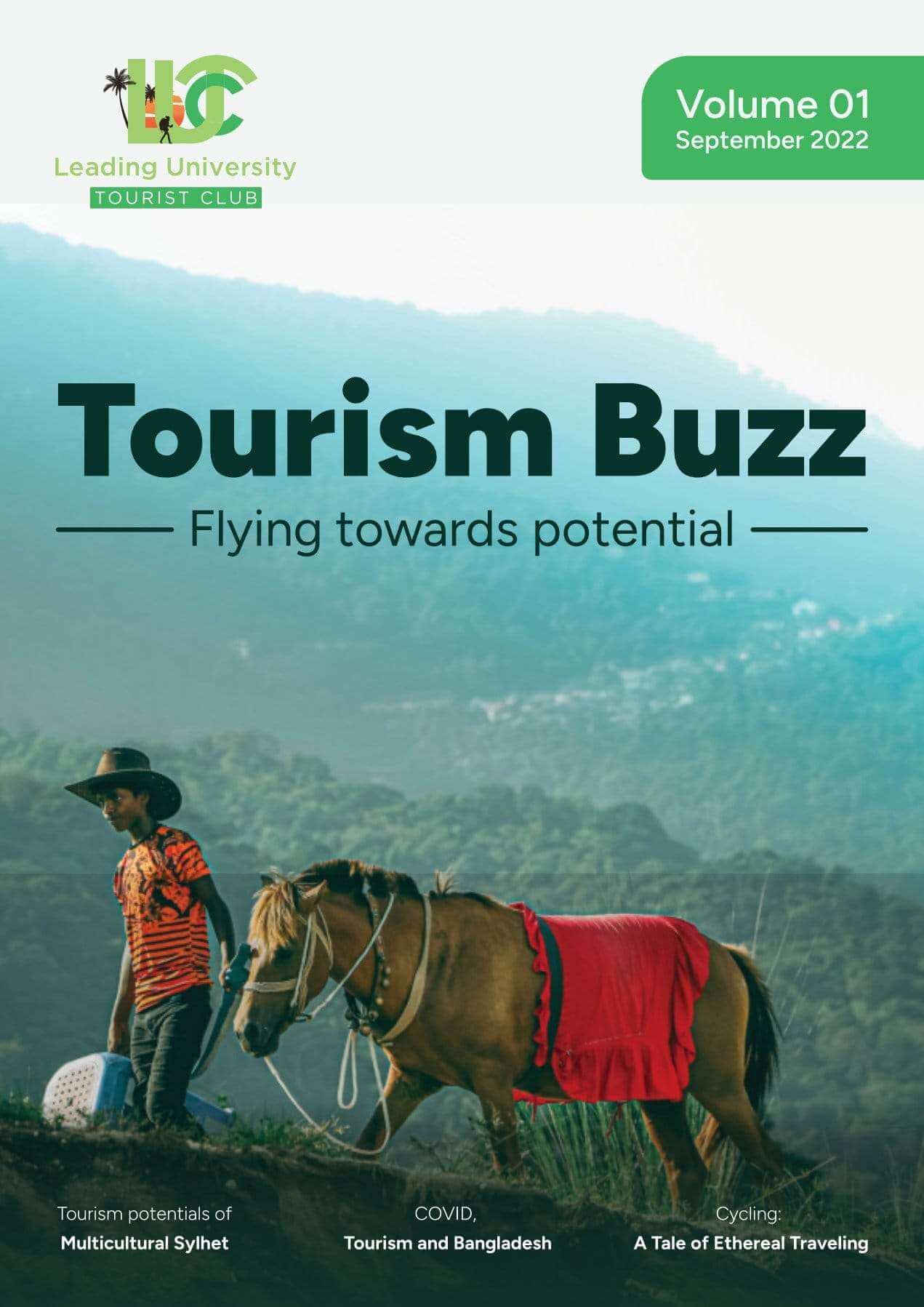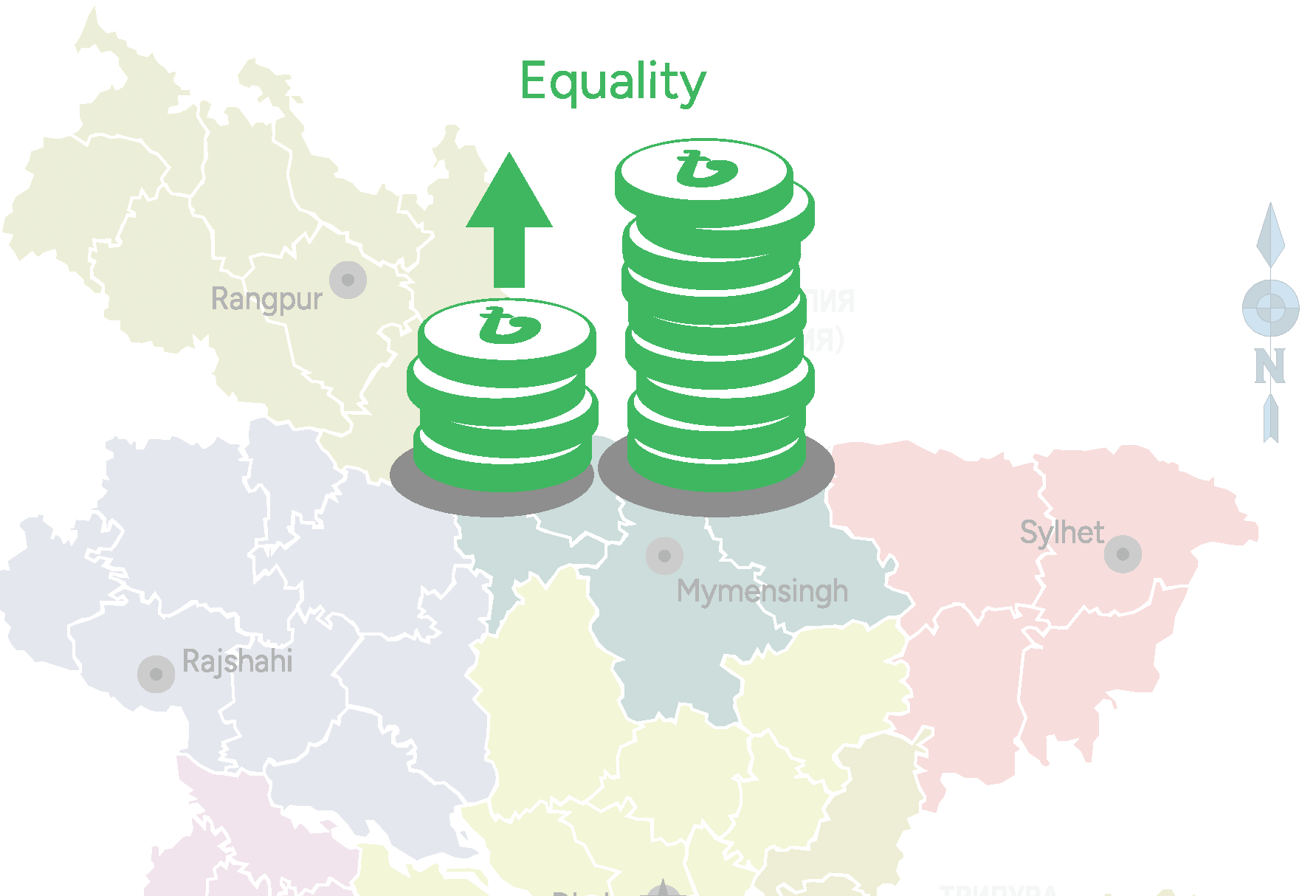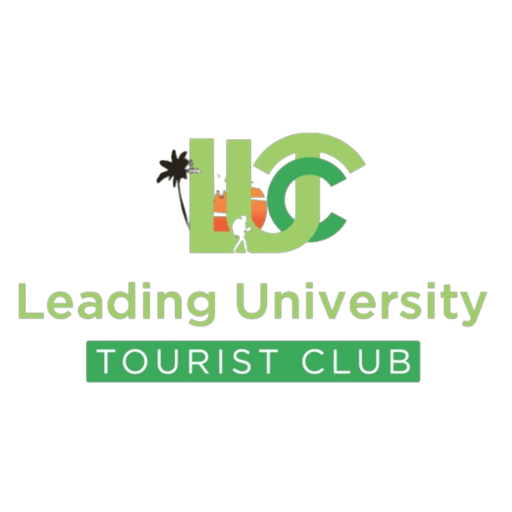At present the tourism industry of any country is a profitable industry for that country. But even a few decades ago, tourism could not be imagined as an industry. Over time, tourism is recognized as the single largest industry in the world today. Tested, proven and established statistics show that tourism directly affects 109 other industries. Currently, the tourism sector contributes about 11%
to the global GDP. In 2019, the number of tourists in the world was 1.5 billion!
We have diverse and rich tourist resources to attract tourists. Considering tourism resources, Bangladesh is called Unique Delta of Seven TA (7TA: Seven Tourist Attractions). These seven TAs are: rivers, seas, mountains, forests, history-tradition-culture, seasonal diversity and hospitality. If one of these seven TAs is present in a place or a country, it is called GOOD for tourism, if there are two, it is called BETTER, and if there are more than two, it is called BEST. In that judgment, Bangladesh’s position is BEST ++++!
According to a report by Forbes Magazine in 2019, Bangladesh ranks first among the top ten countries in terms of job creation in tourism. The tourism industry in Bangladesh employs about four million people. Tourism can be a powerful tool for achieving inclusive and sustainable economic growth. The main theme to achieving inclusive growth is: Creating opportunities for all and improving living standards through the equal participation of people from all walks of life.
With the arrival of a single tourist, 11 people are directly employed in the service sector. Indirectly, job opportunities were created for 33 more people. The arrival of 1 lakh tourists is associated with 11 lakh employment. If a place has 1 million regular domestic and international tourists, there are 11 million permanent jobs. Bangladesh of 160 million people could be more widespread. Because most of these people are young, energetic.
The low-investment, high-profit tourism industry has become one of the fastest growing industries in the world this decade. Tourism is an exceptional export trade. Other trades are to earn foreign exchange by sending goods abroad. But in the field of tourism, foreign exchange can be earned by providing various services and facilities by attracting foreigners to travel to the country. In tourism, the money that a foreign tourist spends on staying, eating, traveling, entertainment, etc. is earned in the foreign currency of another country. According to the statistics, this service sector has a huge potential to increase GDP growth or gross domestic product (GDP) as the income from the tourism industry is growing faster and more profitable than other exports. Moreover, as the cost of this industry is low, it can be especially helpful in filling the trade deficit.
The concept of rural tourism can bring about socio-economic and environmental well-being of the rural community by reviving the conventional concepts of tourism and ensuring the sustainable development of a particular country. There is a huge opportunity for the tide of development and empowerment in rural life and the passage of rural culture through rural tourism. As most of our tourist attractions are located in the marginal areas of the country, it is possible to make a significant contribution to the overall economy of the country through the development of rural tourism.
Tourism is a labor intensive industry, so it creates employment opportunities for both skilled and unskilled workers. Already, the tourism industry has become the largest sector in the world in terms of job creation. The progress of the tourism sector is almost one and a half times more than other industries in terms of progress in creating employment opportunities. Moreover, as the activities of this industry are conducted in different parts of the country, more employment opportunities are created for the rural people. Rural tourism development can play a more effective role than microfinance in boosting rural employment and rural economic conditions. Involvement in various activities directly or indirectly related to tourism will increase the financial capacity of rural women. This rural tourism will be one of the means of women empowerment.
The incredible all-weather road connecting Mithamoin-Itna-Austagram upazilas is a vivid example of how the social and economic environment of a remote area can be changed by transforming it into a tourist destination. As a result, radical and revolutionary changes have taken place in the whole Haor scene. This road has not only changed the communication system of the Haor area, but has also strengthened the economic base of the whole Haor. There has been a touch of change in the living standards of the people of Haor. This Haor, once a very neglected and remote town, is now visited by thousands of tourists every day. The massive influx of tourists has opened new avenues of employment for the poor, unemployed youth of this region.
Many young people are earning money by transporting motorbikes, easybikes and other vehicles. Professional boatmen are getting the opportunity to earn money by taking tourists to deep haor by boat, trawler and speedboat. In addition, the cost of transporting goods has come down a lot as the communication system has become easier. As a result, there is easy availability of essential commodities in the market and the prices have come within the purchasing limits. Hundreds of families have been provided sustenance as more than two hundred temporary hotels, restaurants and food shops have been set up in Itna-Austagram Sadar. In the overall economic system, these infrastructures of Haor are playing a huge role in the overall development of the country.
The tourism sector can be one of the means to implement the SDGs. Of the 17 goals the United Nations has set for achieving the Sustainable Development Goals (SDGs)-8, 12 and 14 no points are directly related to tourism. The other 14 goals are also involved in tourism in one way or another. Therefore, the development of tourism can play a great role in the implementation of the SDGs.
Tourism industry in Bangladesh is an emerging industry. The huge improvement in the tourism industry in the last few years is noticeable. Tourism board has been established, master plan has been formulated. In his special message, the UN Secretary General said that tourism would be one of the main tools to turn the world around after the Covid-19 era. We must seize this opportunity.
Here are some Recommendations:
▪ To appoint dedicated tourism friendly officers in the embassies of Bangladesh stationed abroad and to arrange posters and displays related to tourism in those embassies.
▪ The political instability of 2013, the terrorist attack on the Holey Artisan, many foreign tourists are terrified about traveling to Bangladesh. Foreign tourists should be assured through the Ministry of Foreign Affairs and embassies that, “Come to our country. Our country is very suitable and safe for travel.”
▪ We have not yet discovered all the tourist spots in Bangladesh. Therefore, to continue the work of identifying new tourist destinations in the interior of the country and to ensure security along with the construction of infrastructure, development of communication system, creation of entertainment system.
▪ Tourist places need to pay more attention to eco-tourism while maintaining biodiversity and maintaining the tourism system, so that tourism in those areas is sustainable. Such as: Sundarbans, Saint Martin, Ratargul, Sajek etc.
▪ We need to promote our airports in a customer-friendly and international manner. If foreign tourists face any complications at the airport, they will not set foot in Bangladesh for the second time.
▪ In addition to conventional tourism, haor tourism, religious tourism, halal tourism, adventure tourism, river tourism should be introduced. At present, as a major Muslim country, we can easily introduce halal tourism to attract tourists to the Middle East. Dhaka was declared as OIC Tourism City-2019 at the 2016 OIC International Conference.
▪ In addition, there is a need to formulate appropriate policies related to the tourism sector, infrastructure development, human resource development, adequate investment for services and facilities in tourist destinations, preparation for rural tourism arrangements, and increase public-private partnerships.









